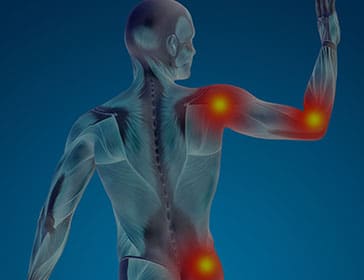Sarcoma Treatment
Sarcoma – Overview
If you or a loved one has recently been diagnosed with sarcoma, it’s likely that you have a lot of questions. That’s why North Cascade Cancer Center has put together this information portal. In it, you will find answers to a number of common questions about soft tissue tumors and their treatments.
Sarcoma: An Easy Definition
The most basic way to think of sarcoma is as a tumor of the body’s soft and connective tissues. Surprisingly, this includes bone, as well as the following tissue types:
- Nerves
- Fat
- Muscle
- Blood vessels
- Cartilage
- Deep skin tissues
Since these tumors can affect such a broad range of tissues over a large area of the body, radiation oncologists have classified over 50 subtypes of sarcoma. Each subtype is unique for its speed of spread, growth pattern, and/or the tissue it originates in.
Understanding How Sarcoma is Classified
Regardless of diagnosis type, our sarcoma treatment plans are based on the stage of cancer. This means that there will be different approaches for a tumor that has not moved into any other tissue than for one that has. It’s important that your treatment plan reflects both the stage and the subtype of the sarcoma you were diagnosed with.
Treatment Options
Currently, all treatments for sarcoma are surgically based. There may be some use of radiation or chemotherapy to help mitigate the effects but by and large, the solution will be surgical.
Sarcoma – Types & Stages
Sarcoma is a broad term for soft tissue cancers that can be applied to a number of conditions that have more differences than they do common aspects sometimes. One can always count on the sarcoma to be a tumor, but whether it is malignant or benign, its growth trajectory and even its structure can vary from subtype to subtype. That’s why it is important to understand as much as possible about your specific diagnosis.
Common Types of Sarcoma
There are over 50 subtypes of sarcoma that are classified by factors that include their growth pattern, structure, and the tissue they primarily affect. It would be cumbersome to list them all here because many are quite rare, but some of the more common subtypes include:
- Angiosarcoma
- Desmoplastic small round cell tumor
- Fibromyxoid sarcoma
- Gastrointestinal stromal tumor
- Kaposi sarcoma
- Malignant peripheral nerve sheath tumors
- Undifferentiated pleomorphic sarcoma
These sarcoma subtypes are paired with an assessment of the tumor’s size and other factors to help determine what stage the cancer is in when it is diagnosed.
Sarcoma Stages
In addition to whether or not the lymph nodes are affected and whether or not metastasis has occurred, radiation oncologists working on sarcoma also grade the tumor’s size when assigning a stage to the cancer. Those sizes are:
- Gx: Not developed enough to be graded
- G1: Size 2 or 3
- G2: Size 4 or 5
- G3: Tumor size is 6 or larger
Tumors that do not have lymph node involvement and have not metastasized are typically assigned stage 1 or 2. Tumors that have metastasized might be assigned stage 3, but are more likely stage 4.
Sarcoma Screening, Detection & Treatment
Unfortunately, there is no easy way to detect sarcomas. At least, not for the majority of the population. There is a genetic test that can determine whether or not you have a predisposition to developing these tumors but only for people who have a specific family history of cancers and other related tumors. For everyone else, the recommendation is that you consult with your doctor immediately if you find any growth or a new lump that you can’t readily explain as being related to a pre-existing condition.
Sarcoma Cancer Treatment
Regardless of the type of sarcoma, the main treatment remains the same, and that is a surgical solution. This is because the only way to cure sarcoma is to remove it completely from the body. Other therapies may be used to support the surgical solution, but every Anchorage sarcoma treatment involves surgical intervention heavily.
- Stage 1: These tumors are quite small and typically can be removed readily. There may be some supplemental radiation or chemotherapy after.
- Stages 2 and 3: At these stages, the tumor’s growth is significant and there might be some involvement of the lymph nodes. If that happens, the affected nodes are typically removed. Larger tumors may need to be shrunk with radiation or chemotherapy before they can be removed.
- Stage 4: It is not often possible to completely cure stage 4 sarcomas, but when it can be done it is because the radiation oncologists determine a way to completely remove the tumors from each organ. That requires careful consultation with patients on an individual basis.
FAQ
There are a few questions about brain cancer that North Cascade Cancer Center gets on a regular basis, and that I why we have put together this list of our best answers to our most common questions.
Contact North Cascade Cancer Center Today
If you are ready to start the fight against cancer, we are here to help and support you. Give us a call at (360) 370-2873 with any questions or reach out to us at our contact page. We look forward to hearing from you and helping you overcome cancer on your way to a healthier, happier life.



